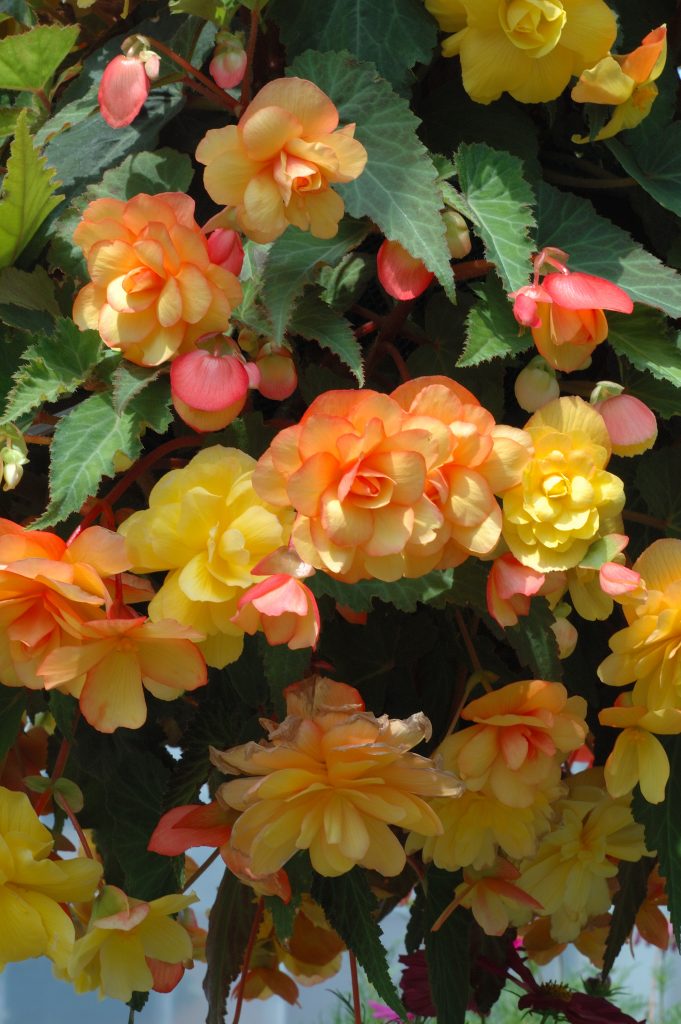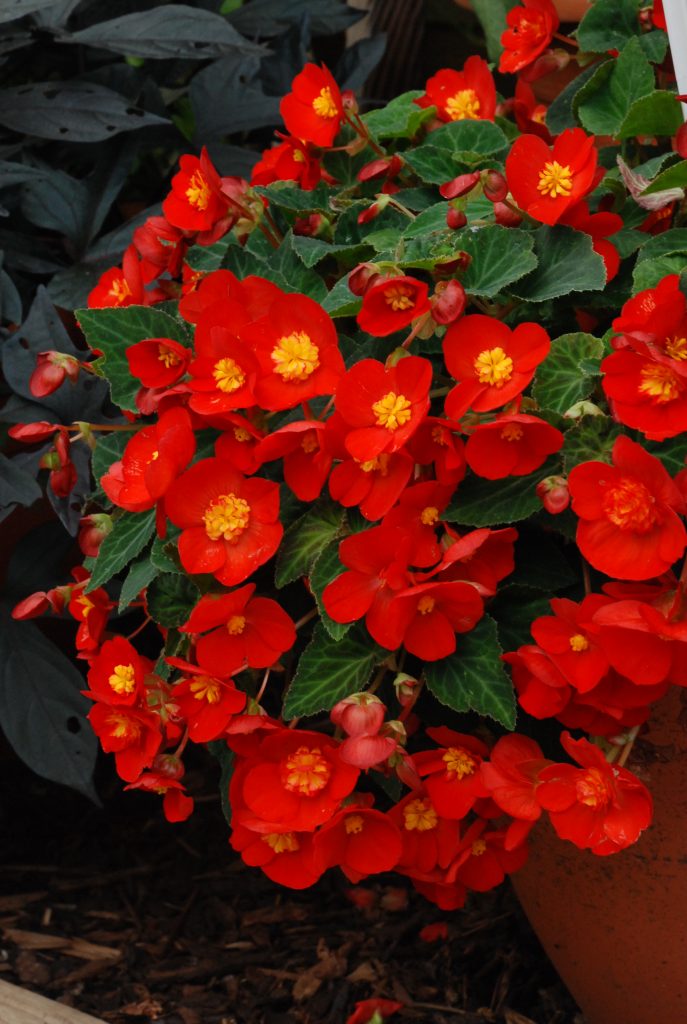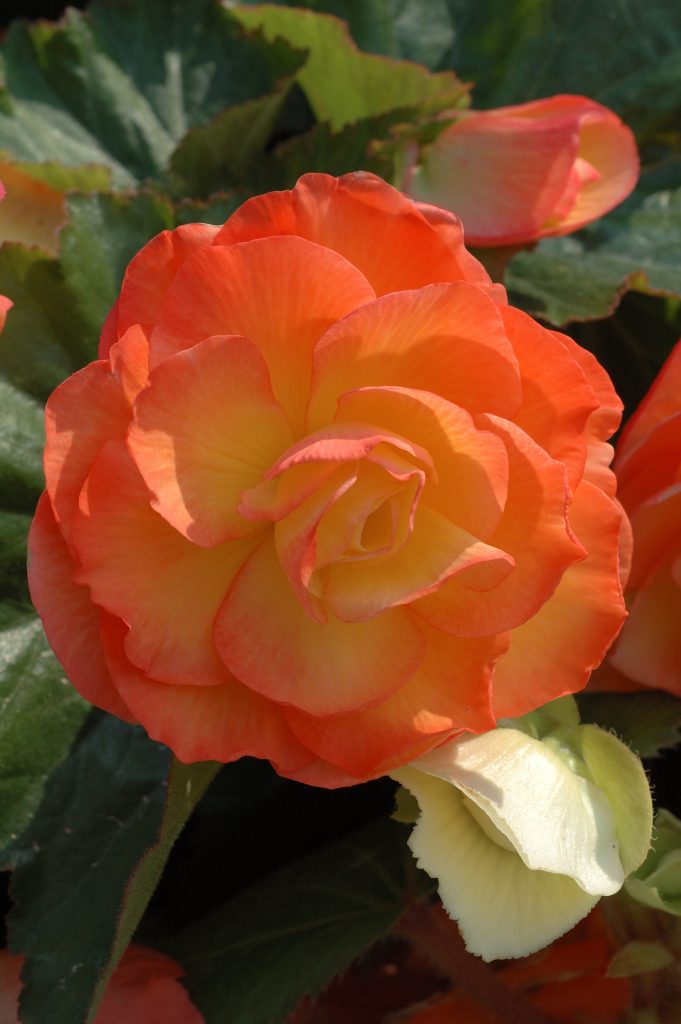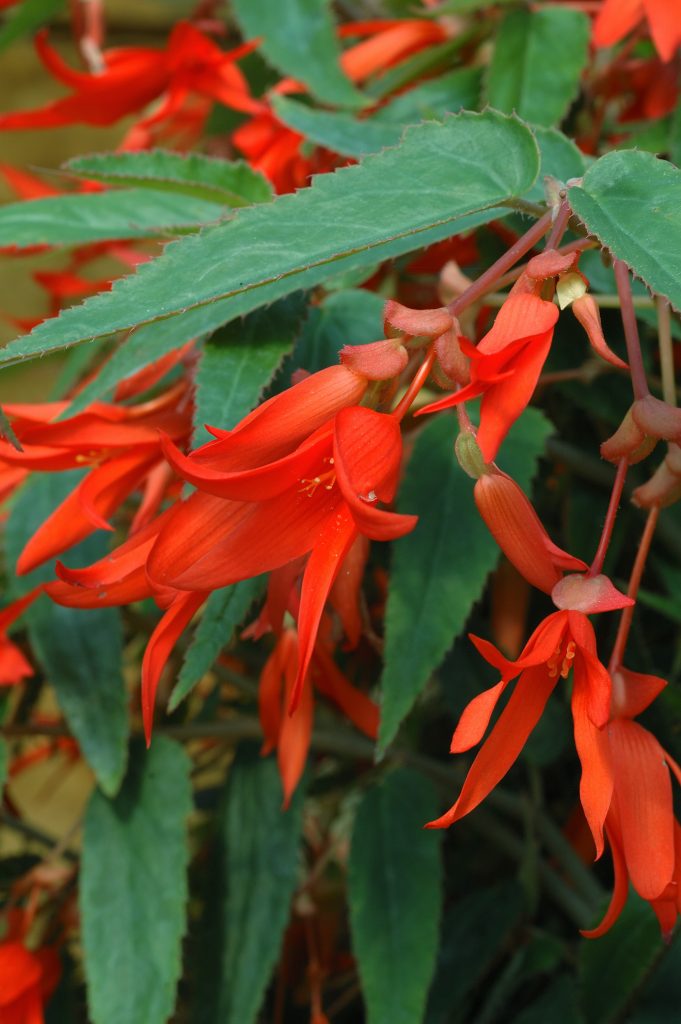
When it comes to luxuriant summer colour you can’t beat begonias. The variety is huge, with every colour except lilac and blue, the blooms can be small or massive and they can be used in borders, window boxes and patio pots.
The most popular for bedding are the Semperflorens kind, which are called wax begonias in America. They have small leaves and flowers, in pink, white and red and they make dumpy plants 15-20cm high. Although the flowers are small they are produced in vast numbers and the plants, and flowers can cope with all weathers.
Like all begonias they are tolerant of a little shade. They will not flower quite as well in full shade as they do in sun but they are perfect for that spot that only gets sun for half the day.
This also suits the many kinds that form, or can be grown from, tubers. These usually have large, fully double flowers and the pendulous kinds are especially popular for hanging baskets. They can be grown from plug plants and many of the plants you buy will have been grown from seed by the nursery. But, at the end of the season you can save the tubers to grow another year.

The most popular of these, for patio pots, are the Non-stop type which have flowers about 8cm across, and some have dark foliage too. Few plants last as long through the summer. Types with bigger flowers do packs punch but the huge blooms are more prone to wind damage, especially as autumn approaches.
Plant begonias in standard multipurpose compost and keep moist at all times – drought will cause white, powdery mildew on the leaves. Poorly drained compost will cause rot damage and plants may collapse. Deadheading is rarely necessary. Each central, double flower is male and will drop off as it ages. There are usually two female flowers, either side, with a triangular seedpod behind. These are not as showy as the males and, in the big-flowered kinds you could nip them off. But this is not essential as long as you keep your plants watered and fed to promote growth.

Don’t limit your begonia planting to pots. A few begonias popped among hostas and ferns in the woodland garden bring welcome colour to areas that can be a bit dull after the excitement of spring.

Jobs for the week
What a difference in the weather! From a cold, wet May to Blazing June! We need to pay attention to watering in this hot weather, especially because so many bedding plants, newly put in the ground, will dry out quickly. They may not have made any new roots into the surrounding soil so need watering as often as if they were in their small pots. The same is true of newly planted shrubs and trees. Conifers and evergreens are especially prone to drying out and they do not wilt when dry so we often only notice the problem when they go yellow or brown and it is too late. So get out with the watering can or hose.
It is always best to water thoroughly and infrequently than a splash every night. Try to direct the water at the roots rather than spray over the leaves so you soak the roots. It is best to water first thing in the morning or in the evening so the plants get moisture before it evaporates. If you can’t water pots every day, stand them in shade or put them in a large saucer and keep this filled with water – in hot weather.
Plants in pots need feeding but never apply fertiliser to dry compost so if you are struggling to keep them moist then concentrate on water rather than feeding and resume feeding when the weather cools a bit.